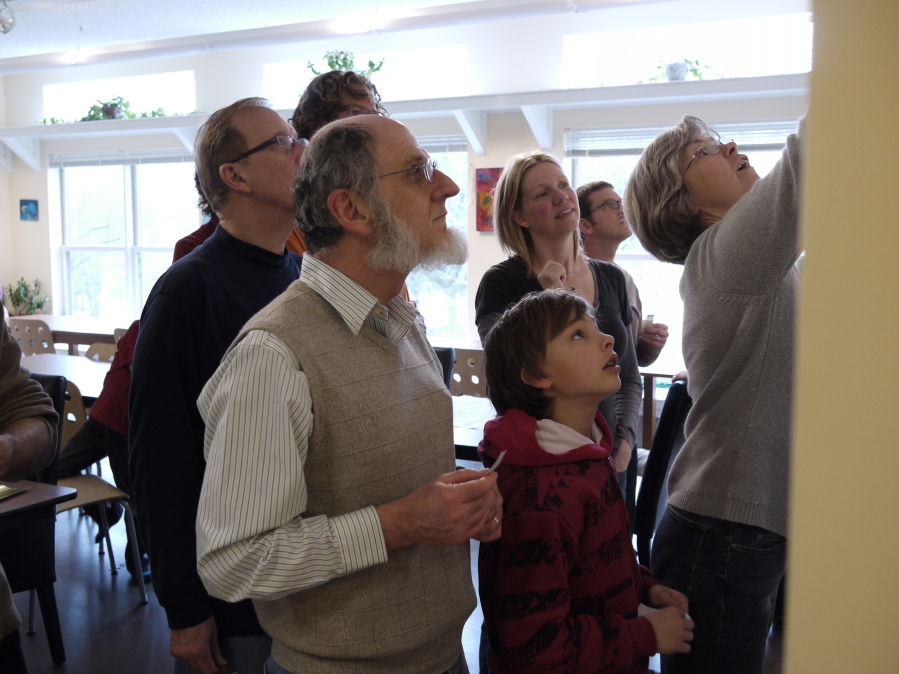When Joanna Vander Plaats moved with her two young daughters to Grand Rapids, Mich., nearly eight years ago, she wanted to find a friendly and welcoming neighborhood.
The family’s move from Kalamazoo, a home they’d always known, was nerve-wracking. They didn’t know a single person in their new city — much less a friend who might watch the kids or come over for dinner.
As Vander Plaats, 30, was researching Grand Rapids, she came across a cohousing development, Newberry Place. It was a pedestrian-friendly neighborhood with 20 separate townhouses that shared some common spaces, including a clubhouse, where there were weekly dinners for residents.
“Cohousing made it easier to start a new life,” Vander Plaats said. Two months after she and her girls moved in, they knew the neighbors in all the other 19 houses.
“I knew a little about each of them,” she said. “I knew their family dynamics. It helped me feel like Grand Rapids was home a lot quicker.”
What exactly is cohousing? It’s a community-focused living arrangement, where residents share space, chores and fellowship. The idea started in Denmark in the 1960s and has spread across Europe and the U.S.
“It’s about sharing resources and engaging in your community,” said Thomas Barrie, a professor of architecture at North Carolina State University and author of the new book “House and Home: Cultural Contexts, Ontological Roles” (Routledge).
Cohousing developments and starter groups — those who get together to plan a new site — have been growing in America, Barrie said.
It’s a promising model for those who want to “age in place,” he said. Older folks can live independently for longer because there is a steady stream of neighbors to check in on them.
Yet cohousing hasn’t reached its full potential in the U.S., Barrie believes. “It’s not something that’s been capitalized yet in America,” he said, because housing in the U.S. has been defined as “your private realm.”
At Newberry Place, parking is toward the back and on one edge of the development. What you see while walking through the neighborhood is porches and front doors. It’s built to foster accidental interactions between neighbors.
This was appealing to Dan Miller, 66, a retired professor at Calvin College in Grand Rapids. Miller and his wife wanted to downsize after their children left home.
“It’s like living in a big extended family in a way. You have a really rich support system,” Miller said.
There are weekly dinners in the clubhouse, and neighbors sign up for a turn to cook.
At some developments, neighbors share yard work or child care duties. As with a condominium, residents pay into an association fund for common-space upkeep.
But at many cohousing developments, the impromptu events are just as important as the planned ones.
On Friday evenings, neighbors at Newberry tend to gather at the common house or outside on the deck with wine and snacks.
“We’ll complain about our week or we’ll share laughs,” Miller said. “It’s not organized by anybody but it’s kind of a custom. It’s pleasant.”
Neighbors also might connect over rides to the airport, borrowing eggs or watching each other’s children. Or more serious things.
At New View Cohousing, a development of 24 houses set on 18 wooded acres in Acton, Mass., David Hoffman lost his wife of 34 years to cancer. After the devastating loss, he sent an email to residents around noon to let them know there would be a gathering that evening.
“At 7 p.m. that night, the common house was filled, and there were people from every one of the 24 households in the community,” he said. “You don’t get that in a regular neighborhood.”



